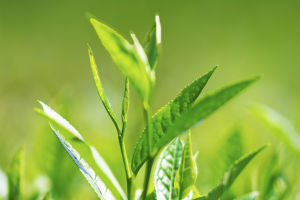Plants and their environment are interconnected, and the tea tree is no exception. In its evolutionary process, the tea tree has adapted to certain environmental conditions, and therefore, it has specific requirements and preferences for external environmental conditions.
Under the right conditions, the tea tree grows and develops normally, leading to high tea yield and quality. Conversely, adverse conditions can negatively affect the fertility of the tea tree.
As a subtropical plant, the tea tree thrives in specific environmental conditions characterized as "four likes and four fears." These include a preference for light but fear of excessive sunlight, a preference for warmth but fear of cold, a preference for acidic soil but fear of alkaline soil, and a preference for moist soil but fear of flooding.
The tea tree has specific requirements for various environmental conditions, which are discussed below:
1. Light
The tea tree relies on photosynthesis to produce 90%-95% of its biological production using carbon dioxide and water. Light intensity, duration, and quality (solar spectrum) affect not only the metabolic status of tea trees, but also other physiological processes, developmental stages, and atmospheric and soil temperature and humidity.
2. Heat
Heat is crucial for the fertility of the tea tree, with the temperature being the main influence on tea tree fertility. Tea tree fertility is affected by ground temperature and accumulated temperature, and there are three main temperature boundaries - the minimum, optimum, and maximum temperature - for each stage of the tea tree's fertility.
High or low temperatures can hinder tea growth and development, weaken metabolic function, and result in thin sprouted buds and leaves, low normal growth of inner components of buds and leaves, and poor tea quality.
3. Moisture
Water is essential for the tea tree's physiological activities such as photosynthesis, respiration, and nutrient absorption and transportation. It also affects other ecological factors and has specific requirements for the tea tree. The main factors affecting tea tree fertility include precipitation, air humidity, and soil moisture.
4. Soil Conditions
Soil is crucial for the tea tree's growth and development, providing water, nutrients, air, and heat. Soil conditions include physical, chemical, and biological environments.
a. Physical environment
Soil physical environment refers to the thickness of the soil layer, soil texture, structure, density, weight, porosity, soil air, soil moisture, and soil temperature. Multi-granular and lumpy structures in the topsoil layer and block structures in the heart of the soil layer are ideal.
b. Chemical environment
Soil chemical environment refers to soil absorption function, soil pH, and soil nutrient content. Soil pH, organic matter content, and inorganic nutrient content are the main factors affecting tea tree growth.
c. Biological environment
Soil biological environment refers to the influence of plants and animals, microorganisms, and human activities on soil formation and fertility.
5. Topographic Conditions
Terrain conditions include latitude, altitude, slope direction, and slope, among others. These ecological factors not only affect the fertility of tea trees but also the quality of tea leaves. Different latitudes have varying intensities of light, temperature, ground temperature, precipitation, and other climatic factors.
The suitability of tea trees depends on various environmental and ecological conditions that significantly affect their fertility and quality. Therefore, selecting suitable land for tea planting and maintaining soil and water to ensure ecological balance is essential for the development of tea production.


